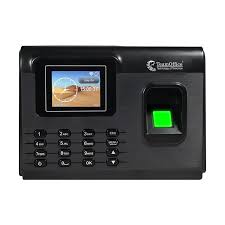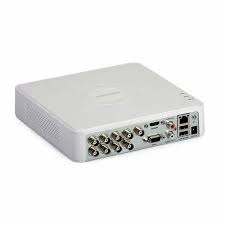LED: Illuminating the Future
In recent years, LED (Light Emitting Diode) technology has revolutionized the lighting industry. From residential homes to commercial buildings, LED lights have become the go-to choice for their numerous advantages over traditional lighting options. Let’s explore why LED is illuminating the future.
Energy Efficiency: One of the most significant benefits of LED lights is their exceptional energy efficiency. Compared to incandescent bulbs, LEDs consume significantly less power while delivering the same or even better illumination. This translates into reduced electricity bills and a smaller carbon footprint, making LED lights an environmentally friendly choice.
Long Lifespan: LED lights have an incredibly long lifespan compared to conventional bulbs. On average, LEDs can last up to 50,000 hours or more, which is significantly longer than incandescent or fluorescent bulbs. This longevity not only saves money on replacements but also reduces waste and contributes to a sustainable future.
Durability: LED lights are highly durable and resistant to shock, vibrations, and extreme temperature variations. Unlike traditional bulbs that are fragile and prone to breakage, LEDs can withstand rough handling and harsh conditions without compromising their performance. This makes them ideal for outdoor lighting applications as well.
Versatility: LED technology offers a wide range of lighting options suitable for various purposes. Whether you need bright task lighting in your office, warm ambient lighting in your living room, or colorful decorative lighting for special events, there’s an LED solution available. With adjustable color temperatures and dimming capabilities, LEDs provide flexibility in creating the desired ambiance.
Instantaneous Lighting: Unlike traditional bulbs that take time to reach full brightness after being switched on, LEDs provide instant illumination at maximum output. This feature is particularly useful in areas where immediate visibility is crucial, such as security lighting or emergency situations.
Design Flexibility: The compact size of LEDs allows for innovative design possibilities that were previously unattainable with traditional lighting sources. From slim and sleek fixtures to intricate lighting arrangements, LED lights offer endless design options to enhance the aesthetics of any space.
Environmentally Friendly: LEDs are free from harmful substances such as mercury, which is commonly found in fluorescent bulbs. This makes LED lights safer for both human health and the environment. Additionally, LED lights produce less heat, reducing the risk of fire hazards and making them ideal for enclosed spaces.
Cost-Effective: While LED lights may have a higher upfront cost compared to traditional bulbs, their long-term benefits outweigh the initial investment. The energy savings, extended lifespan, and reduced maintenance costs make LEDs a cost-effective lighting solution in the long run.
In conclusion, LED technology has transformed the way we light our surroundings. With their energy efficiency, durability, versatility, and environmental friendliness, LEDs are leading the way towards a brighter and more sustainable future. Embracing LED lighting not only enhances our lives but also contributes to conserving energy and preserving our planet for generations to come.
6 Essential Tips for Choosing and Installing LED Lights
- Consider the color temperature of the LED when choosing a light source.
- Look for LED labels that indicate their expected lifespan and energy efficiency ratings.
- Check to make sure the LED you are buying is compatible with your existing fixtures and dimmers.
- Make sure you buy LEDs from a reputable manufacturer to ensure quality and reliability.
- Install LEDs in well-ventilated areas to prevent overheating and ensure long life expectancy.
- Choose LEDs with built-in features such as motion sensors, timers, or dimming capabilities for added convenience and energy savings potential
Consider the color temperature of the LED when choosing a light source.
Consider the Color Temperature of LED Lights: Illuminating with the Right Ambiance
When it comes to choosing LED lights, one crucial aspect to consider is the color temperature. The color temperature of a light source determines the ambiance and mood it creates in a space. Understanding this concept can help you make an informed decision when selecting LED lights for your home or workplace.
Color temperature is measured in Kelvin (K) and is categorized into three main groups: warm white, neutral white, and cool white. Each category has its own unique characteristics and applications.
Warm White (2700K-3000K): If you’re looking to create a cozy and inviting atmosphere, warm white LED lights are an excellent choice. They emit a soft, yellowish glow that resembles traditional incandescent bulbs. Warm white lighting is ideal for living rooms, bedrooms, and dining areas where you want to evoke a sense of warmth and relaxation.
Neutral White (3500K-4500K): Neutral white LED lights strike a balance between warm and cool tones. They provide a clean and natural illumination that closely resembles daylight. Neutral white lighting is suitable for areas where accurate color representation is important, such as kitchens, offices, and retail spaces.
Cool White (5000K-6500K): Cool white LED lights emit a bright, bluish-white light that simulates daylight or moonlight. This type of lighting creates a crisp and energetic ambiance, making it ideal for task-oriented areas like offices, workshops, garages, or outdoor spaces where visibility is crucial.
Considering the color temperature of LED lights allows you to tailor the lighting experience to suit different activities and moods. It’s important to note that personal preference plays a significant role in choosing the right color temperature. Experimenting with different options can help you find the perfect balance between functionality and aesthetics.
Moreover, it’s worth mentioning that advancements in LED technology have made it possible to adjust the color temperature of certain LED lights. These tunable LED lights allow you to switch between warm, neutral, and cool tones according to your preference or the specific requirements of a space.
In conclusion, when selecting LED lights for your home or workplace, don’t overlook the importance of considering the color temperature. Understanding how different color temperatures create distinct atmospheres can help you create the desired ambiance in each area. Whether you want a warm and cozy feel, a neutral and natural look, or a bright and energetic environment, choosing the right color temperature will ensure that your LED lights illuminate with just the right ambiance.
Look for LED labels that indicate their expected lifespan and energy efficiency ratings.
When it comes to purchasing LED lights, it’s essential to look beyond just the brightness and color temperature. Paying attention to the LED labels that indicate their expected lifespan and energy efficiency ratings can help you make an informed decision.
LED lights are known for their long lifespan compared to traditional lighting options. By checking the LED label, you can find information about the estimated lifespan of the bulb. This will give you an idea of how long you can expect the LED light to last before needing a replacement. Opting for LEDs with a longer lifespan can save you money in the long run as you won’t have to replace them as frequently.
Energy efficiency is another crucial aspect to consider. The energy efficiency rating on the LED label provides valuable information about how efficiently the bulb converts electricity into light. Look for labels that indicate high energy efficiency ratings, such as ENERGY STAR certification or BEE (Bureau of Energy Efficiency) ratings in India. Choosing energy-efficient LEDs not only helps reduce your electricity bills but also contributes to a greener environment by lowering carbon emissions.
By paying attention to these LED labels, you can make a smart choice that aligns with your requirements and values. Investing in LED lights with longer lifespans and high energy efficiency ratings ensures that you enjoy long-lasting illumination while minimizing your environmental impact. So, remember to look for those informative labels when shopping for LED lights and make a brighter, more sustainable choice for your lighting needs.
Check to make sure the LED you are buying is compatible with your existing fixtures and dimmers.
When it comes to purchasing LED lights, it’s essential to ensure compatibility with your existing fixtures and dimmers. Here’s why this tip is crucial:
LED lights come in various shapes, sizes, and configurations. While they offer numerous benefits, including energy efficiency and longevity, not all LEDs are designed to work seamlessly with every type of fixture or dimmer switch.
Firstly, check the compatibility of the LED bulb or fixture with your existing fixtures. LED bulbs are available in different base types such as E26 (standard screw-in), GU10 (twist and lock), or MR16 (pin base). Ensure that the LED bulb you choose has a base that matches your fixture.
Additionally, consider the wattage equivalence of the LED bulb. LED bulbs typically provide an equivalent light output to traditional incandescent or halogen bulbs but consume significantly less power. Make sure that the LED bulb you select provides adequate brightness for your needs.
Furthermore, if you have dimmer switches installed in your home or workspace, it is crucial to verify if the LED lights are compatible with them. Not all LEDs are designed to work with standard dimmers meant for incandescent bulbs. Look for “dimmable” LEDs specifically labeled as compatible with dimmer switches.
Using non-compatible LEDs with existing dimmers can result in flickering lights, limited dimming range, or even damage to both the LEDs and the dimmer switch itself. To avoid these issues, opt for LEDs explicitly designed for dimming applications or consider upgrading your dimmer switches to ones compatible with LED lighting.
By checking compatibility before purchasing LEDs, you ensure a seamless integration into your current lighting setup. This step saves you from potential frustrations and ensures optimal performance and longevity of both the LED lights and your existing fixtures and dimmers.
In conclusion, taking a moment to verify compatibility between the LED lights you intend to purchase and your existing fixtures and dimmers is essential. It ensures a hassle-free installation and guarantees that you can enjoy the full benefits of LED lighting without any compatibility issues.
Make sure you buy LEDs from a reputable manufacturer to ensure quality and reliability.
Make an Informed Choice: Buy LEDs from Reputable Manufacturers
When it comes to purchasing LED lights, it’s essential to prioritize quality and reliability. With the market flooded with various brands and options, it can be tempting to opt for cheaper alternatives. However, choosing LEDs from reputable manufacturers is crucial to ensure you get the most out of your investment.
Reputable manufacturers have a proven track record of producing high-quality LED lights that meet industry standards. They invest in research, development, and rigorous testing processes to deliver products that are reliable, efficient, and long-lasting.
Here are a few reasons why buying LEDs from reputable manufacturers is a smart choice:
- Superior Quality: Reputable manufacturers adhere to stringent quality control measures throughout the manufacturing process. They use premium-grade materials and employ advanced technology to produce LEDs that offer consistent performance and durability. By investing in quality products, you can avoid issues like premature failure or reduced brightness over time.
- Reliability: LEDs from reputable manufacturers undergo extensive testing to ensure they can withstand various conditions and deliver optimal performance. They are designed to handle voltage fluctuations, temperature variations, and other environmental factors without compromising their efficiency or lifespan. This reliability ensures that your LED lights will continue to function reliably for years to come.
- Warranty and Support: Reputable manufacturers stand behind their products by offering comprehensive warranties and excellent customer support. In case of any issues or defects, they provide assistance and replacements as per their warranty terms. This gives you peace of mind knowing that your investment is protected and that there is support available if needed.
- Safety Assurance: Buying LEDs from reputable manufacturers reduces the risk of safety hazards associated with substandard products. Reputable brands comply with safety standards and regulations set by relevant authorities, ensuring that their products are safe for use in homes, offices, or any other environment.
- Energy Efficiency: Reputable LED manufacturers prioritize energy efficiency by constantly improving their products’ performance. LEDs from these manufacturers are designed to provide maximum illumination while consuming minimal energy. By choosing LEDs from reputable brands, you can significantly reduce your energy consumption and contribute to a greener planet.
When purchasing LED lights, take the time to research and identify reputable manufacturers in the market. Look for certifications, customer reviews, and industry recognition to validate their credibility. Investing in quality LEDs may require a slightly higher upfront cost, but the long-term benefits, including energy savings and extended lifespan, make it a worthwhile decision.
Remember, buying LEDs from reputable manufacturers is an investment in quality, reliability, and peace of mind. So, make an informed choice and enjoy the numerous benefits that high-quality LED lights bring to your life.
Install LEDs in well-ventilated areas to prevent overheating and ensure long life expectancy.
Install LEDs in Well-Ventilated Areas for Optimal Performance
LED lights have gained popularity for their energy efficiency, durability, and long lifespan. However, to ensure their longevity and maintain optimal performance, it is crucial to install them in well-ventilated areas.
Heat is the enemy of LED lights. While LEDs produce significantly less heat compared to traditional lighting options, they are still sensitive to excessive heat buildup. If not properly managed, overheating can lead to a decrease in performance and a shortened lifespan of the LED bulbs.
By installing LEDs in well-ventilated areas, you allow for proper heat dissipation. Adequate ventilation helps prevent the accumulation of heat around the LED bulbs, allowing them to operate at lower temperatures. This not only ensures their longevity but also maintains consistent brightness and color quality over time.
There are a few simple steps you can take to ensure proper ventilation for your LED lights:
- Choose Suitable Fixtures: Select fixtures that have built-in ventilation or cooling mechanisms. These fixtures are designed to dissipate heat effectively and keep the LED bulbs cool during operation.
- Avoid Enclosed Spaces: Avoid installing LEDs in fully enclosed spaces or areas with limited airflow. Enclosed fixtures trap heat and hinder proper ventilation, leading to increased temperatures around the LEDs.
- Provide Clearance: Allow sufficient space around the LED lights for air circulation. This means avoiding overcrowding or placing objects that obstruct airflow near the fixtures.
- Use Heat-Sinks: Consider using heat-sinks or thermal management solutions when installing high-powered LED lights. Heat-sinks help absorb and dissipate excess heat away from the LED chips, ensuring optimal operating temperatures.
- Regular Maintenance: Keep your LED fixtures clean and free from dust or debris that may obstruct airflow. Regularly inspect them for any signs of overheating such as discoloration or dimming of light output.
By following these guidelines and installing LEDs in well-ventilated areas, you can maximize their lifespan and ensure consistent performance. Proper ventilation not only prevents overheating but also contributes to energy efficiency and cost savings in the long run.
Remember, a well-ventilated environment is essential for the longevity and optimal functioning of your LED lights. So, take the necessary steps to provide adequate airflow around your LED fixtures and enjoy the benefits of efficient and long-lasting lighting.
Choose LEDs with built-in features such as motion sensors, timers, or dimming capabilities for added convenience and energy savings potential
Enhance Your Lighting Experience with Smart LED Features
When it comes to choosing LED lights for your home or office, there’s more to consider than just the brightness and color temperature. Today, LED technology offers a range of built-in features that can enhance your lighting experience while providing additional convenience and energy savings potential.
One such feature is motion sensors. LEDs equipped with motion sensors automatically detect movement within their vicinity and turn on or off accordingly. This is particularly useful in areas where lighting is needed only when someone is present, such as hallways, staircases, or outdoor spaces. Not only does this save energy by eliminating the need for manual switching, but it also provides added safety and security by ensuring well-lit pathways whenever someone approaches.
Another valuable feature to look for in LED lights is timers. With built-in timers, you can set specific schedules for your lights to turn on and off automatically. This is especially beneficial when you’re away from home or have a busy lifestyle. By programming your lights to operate at specific times, you can create an illusion of occupancy and deter potential intruders. Additionally, timers help conserve energy by ensuring that lights are not left on unnecessarily.
Dimming capabilities are yet another fantastic feature found in many LED lights today. Dimmable LEDs allow you to adjust the brightness levels according to your preference or specific lighting needs. Whether you want soft ambient lighting for a cozy atmosphere or brighter task lighting for focused work, dimmable LEDs provide the flexibility to customize the ambiance of any space. By dimming the lights when full brightness isn’t required, you can save energy without compromising on comfort or functionality.
Choosing LEDs with these built-in features not only adds convenience but also maximizes energy savings potential. With motion sensors, timers, and dimming capabilities, you have greater control over your lighting usage and can reduce unnecessary energy consumption.
So next time you’re shopping for LED lights, consider opting for models with these smart features. They not only make your life easier but also contribute to a more sustainable and energy-efficient environment. Embrace the power of technology and enjoy a lighting experience that is both convenient and eco-friendly.



